Shallots - what is this vegetable?
Often many inexperienced gardeners confuse the usual onion and shallots. But they have a lot of differences. Shallots stand out for their easy planting and cultivation. At the same time, it is noted for its original piquant taste. Before planting seedlings, you should familiarize yourself with its advantages, features and contraindications for use. It is imperative to figure out which torches you need to choose for high-quality planting material.
Content:
- Features of the structure of the bow
- Composition and useful properties
- Application
- Harm and contraindications
- How to choose the right bow?
- Storage methods
- Some tips for growing
Features of the structure of the bow
Shallot is one of the varieties of the usual onions... Its origin belongs to the onion genus. But his significant differences from the progenitor significantly distinguish him from the rest of the genealogy.
Shallots have many names - family, charlotte or shrike.
He received such nicknames because of the specific structure, which is formed from several splinters joined together. The number of nests can range from 5 to several dozen.
The characteristic features of torches are:
- Spicy soft taste, no harsh aftertaste, sugary flesh.
- Various colors of the upper layers - purple, pale yellow, light golden, white, dark brown.
- The height of the stretching green feathers is 30 cm.
- Small volumes of heads - from 4 cm in volume and up to 50 g. weight.
- Good preservation - up to 6-7 months.
- A sufficient volume of the obtained yield when forcing greens is up to 6-6.5 kg per 1 m2.
- Varieties of shape - round, flat, plum-shaped.
The main feature of the bulbs over other members of the family is the rapid maturation of young green feathers and bulbs when planting. In addition, the beneficial qualities of the plant when consumed exceed the properties of any other vegetables. The ripening period of Shallot is fixed a whole month faster than other torches.
Breeders have bred about 60 varieties, among which the most popular are:
- Ayrat, Emerald, Krepysh - varieties of varying degrees of ripening;
- Kuban yellow, Cascade, Vitamin basket - differing in taste.
When planting, the torch drives out excellent elastic feathers, but unlike other varieties, it practically does not release arrows. It is because of these qualities that it is the most profitable variety.
Long-term storage is a positive advantage with a large yield of greens. The most popular way to preserve both feathers and bulbs is to freeze them at low temperatures.
Composition and useful properties
Although shallots have significant differences in structure from onions, they are similar in the composition of the chemical substances contained in the torch. The shallots contain the following components:
- Ascorbic acid (exceeds in volume).
- Mineral salts (in high abundance).
- Sugar.
- Nickel, titanium, germanium salts (in small quantities).
- Carotene.
- Vitamins B, PP, E.
- Essential oils.
- Phytoncides.
The amounts of nutrients primarily depend on the acidity and composition of the soil in which the torch is planted.The increase in useful vitamins is significantly influenced by climatic conditions and weather at the time of cultivation.
Due to the large amount of nutrients contained inside, shallots are endowed with useful qualities.
With the daily use of onions, the human body has a great influence:
- Strengthens the immune system, increases the protective functions of the body.
- Helps get rid of vitamin deficiency in the spring periods of lack of fresh vegetables and fruits.
- Recommended for diseases of the eyeball.
- Its use for diseases of the gastrointestinal tract has a positive effect on the mucous membranes of the internal organs.
- Helps eliminate pathogenic bacteria and viruses from the body.
- Affects the cleansing of the intestines from stagnant feces.
- Normalizes blood pressure.
- Has a strengthening effect on the walls of the capillaries.
- Reduce carcinogenic processes, remove toxic substances from the body.
Thus, the daily consumption of a small amount of onions positively contributes to the entire body as a whole. Also, such useful properties as the effect on the acceleration of the regeneration of the skin, which improve blood circulation, are distinguished.
Application
The use of shallots is possible not only for medical purposes, but also as a cosmetic product. As a medication, it is used for colds, to increase appetite and to raise the tone of the whole body.
Gruel from the grated onion has a firming effect on the scalp and hair follicles. Significantly strengthens the hair structure and stimulates the active growth of young hairs.
The use of onions in cooking is of great importance.
Thanks to the inclusion of torches in the preparation of various dishes, an increase in the taste of culinary delights is achieved. Recipes with its use are fast and easy to cook. They love to use it in dishes of European and French cuisine.
No diet goes without the obligatory introduction of nutritious shallots into the diet. The peculiarity is that its taste does not overwhelm the main taste of sophistication, but complements, to a greater extent emphasizes and enhances the qualities of other products.
For cooking, shallots are used in different variations - frozen, fresh or pickled. Often, the use of onions in the husk is allowed for cooking salads. It is specifically stewed in the oven at a temperature of 200-2500C. Heat treatment gives the splinter a delicate texture, sweetish taste and the finest fiber structure. After that, peel off and grind in mashed potatoes.
Harm and contraindications
Onions have a lot of useful qualities that can improve the patient's well-being. But consuming too much can do serious harm instead of the intended benefit. In addition, before starting to use shallots, you should consult and find out about possible contraindications.
It is not recommended to introduce shallots into the diet for people suffering from the following diseases:
- Diseases of the gastrointestinal tract - do not use when making a diagnosis - colitis or pancreatitis. The ban extends due to the fact that the amino acids found in the plant often cause irritation of the digestive organs and their mucous membranes. The process is triggered by increasing acidity in the stomach. Leads to serious consequences requiring medical treatment.
- Diseases of the urinary system and kidneys - substances that saturate the plant are located in the internal organs. With excessive use of onions, the concentration increases, which negatively affects the mucous surface, irritating it. The process provokes a blockage of the excretion of fluids from the body, making it difficult to urinate.
- The transition of chronic diseases to an acute course - increases the likelihood of an inflammatory process with constipation, bronchospasm and liver diseases.
Thus, it is required before excessive use to make sure that there are no negative conditions or serious consequences requiring treatment. In any case, do not neglect the recommendations and increase the dosage of the ingredient being administered.
How to choose the right bow?
Shallots can be purchased at the market or in the supermarket in the vegetable section. But not all products are subject to long-term storage. Before buying each splinter, you need to carefully examine and choose the best quality:
- When choosing, you need to take the onion in your hand and weigh it. A full onion without decay inside will give off a slight weight, equal to 30-50 grams. The husk on the onion must be dry and free of wet spots.
- Pressing on the cavity of the splinter, you should check if there is a crumpled side or a rotten base. If any, the product should not be purchased, it will deteriorate very quickly.
- If a vegetable is selected for planting, then you need to know for what purpose it is intended. If for the formation of large torches for food, then the best option is small seedlings. They will grow into several large torches. Otherwise, if it is supposed to distill a green feather, then it is more expedient to pick up bulky bulbs. A significant number of small daughter torches will form from them, which, with good care, will release a huge number of green feathers suitable for human consumption.
- Be sure to check before buying that all bulbs are thoroughly dried and have a healthy appearance. Only in this case they will be stored for a long period or will grow during planting.
Storage methods
In order for the shallots to remain in good quality for a long period (6-7 months), they are initially allowed to mature well, and then dried thoroughly. Before storage, it should be carefully sorted out, removing all damaged and diseased specimens.
It is imperative to carry out heat and air drying, no later than 4 weeks after harvest. Storage in damp, unventilated rooms is extremely prohibited - this often results in damage to the bulbs by fungal diseases and mold.
Therefore, it is recommended to keep them in dry, well-ventilated and cold basements or vegetable stores.
The following storage methods are used:
- Content in cardboard or wooden containers. The nests are not broken into separate bulbs, they are separated only if necessary;
- Storage by braiding into a braid of not completely dried tops, twisted with twine or a tourniquet. They are hung in the attic of the house, where they spend the winter safely in the cold months.
- Green feathers, cut and placed in cool storage facilities, are stored for 5 days. If you lay out the tops in bulk, then it is subject to preservation for a longer period of time, while not losing its useful qualities and presentation.
The optimum storage temperature for torches in dry rooms is 0 .. + 4 С, the air humidity should not exceed 70%. Temperature conditions up to +1 C have a beneficial effect on the content of shallots in ideal condition for 2 years.
Some tips for growing
To grow shallots at home, you need to prepare and know a few rules of advice. They will allow you not to make common mistakes and get a rich harvest of both feathers and bulbs for eating.
Recommendations for growing shallots:
- The soil for optimal growth requires acidic, while adding rotted humus to it. The application of manure will not be crowned with positive results, the bulbs will rot.
- The soil is prepared in autumn, after fertilizing and acidifying with colloidal sulfur.
- Shallots are planted on a flat area, without low-lying depressions, in well-lit areas of the garden.Excessive moisture will cause decay of the splinter and the loss of the entire crop.
- Not later than April, start planting in open ground, deepening 5 cm into the soil. After that, compacting the soil well is necessary to keep the required moisture near the tuber.
- It is impossible to plant in one place constantly, you need to change the territory. It depends on the fact that shallots are famous for extracting all useful qualities from the earth. Therefore, long-term cultivation in one place entails the degeneration of the onion as a variety.
- After planting work, it is imperative to take care of young shoots. Periodically, the planting is loosened and weeds are removed near the plant.
- Very important watering, especially during the formation of the aboveground part. It is required to be carried out daily. On hot sunny days, irrigation is recommended in the morning or evening hours, at a time when the sun has disappeared behind the horizon. This is necessary so that the rays of the luminary do not burn the young shoots of the plant.
Thus, shallots are distinguished not only by the early ripening of green feathers for consumption, but also by their beneficial qualities. But before use, it is recommended to pay attention to the harm caused by increased absorption volumes. In addition, it is recommended to carefully choose the splinters for purchase. Otherwise, the deterioration of the product will come before it is applied.
More information can be found in the video:



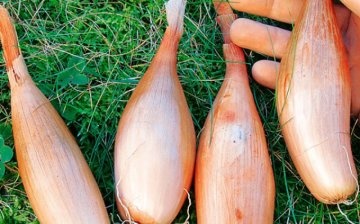
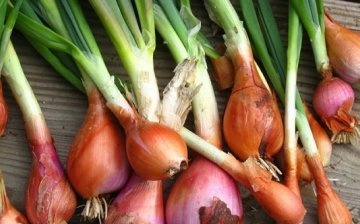
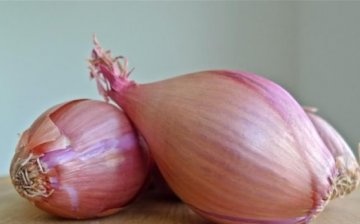
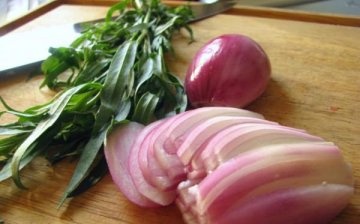

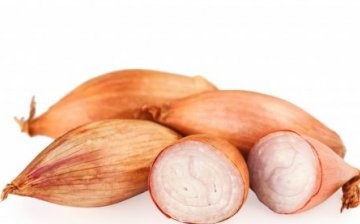
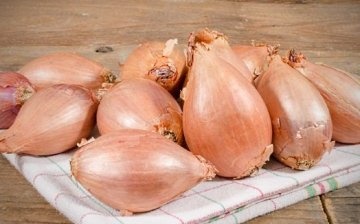









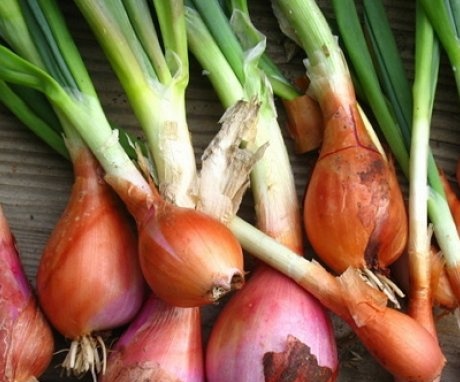
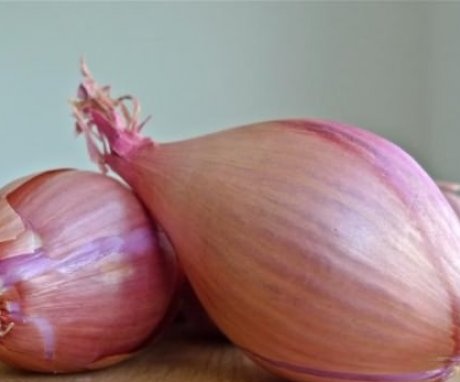
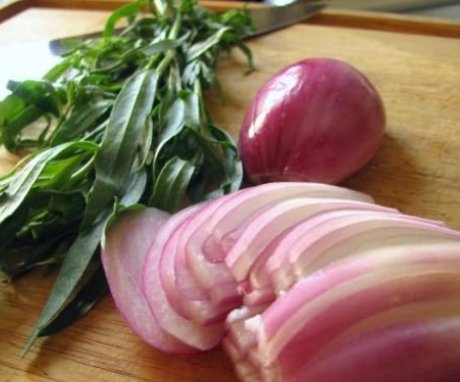

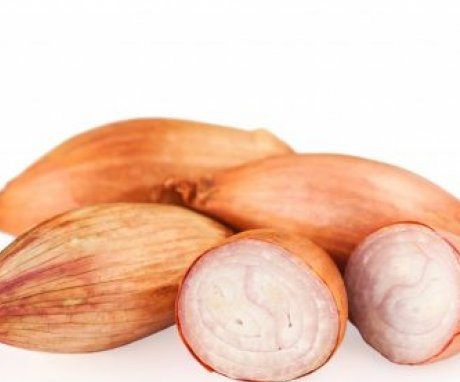
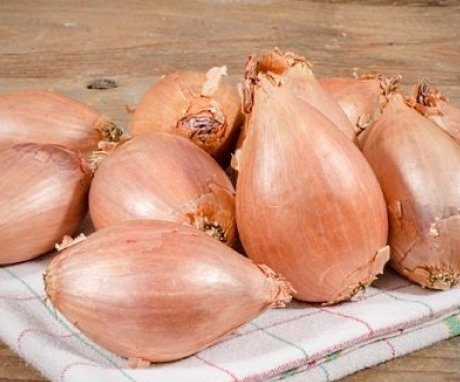
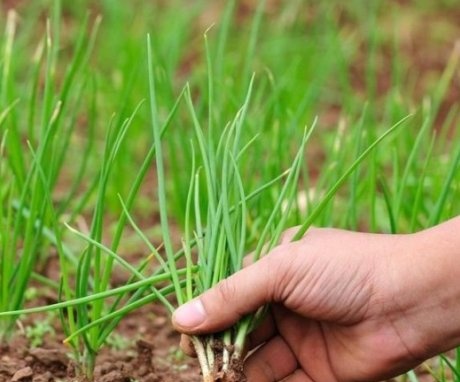
My shallot has been growing for many years, but I didn't know that it was he. Family and that's all, but it turns out that this is the noble European shallot, from which a real onion soup is prepared. Funny .
.
Most importantly, this onion can be stored freely throughout the winter, up to the month of July.
At the same time, it does not lose its trace elements and usefulness. You peel off the dried husk, and the onion looks like fresh ...
We planted shallots on the site several times, but it grows poorly and large bulbs do not grow. In addition, in one place, several torches, connected by the roots, always grow together. Therefore, in order to get large onions, it is better to plant a different variety. Although I really like the taste of shallots.